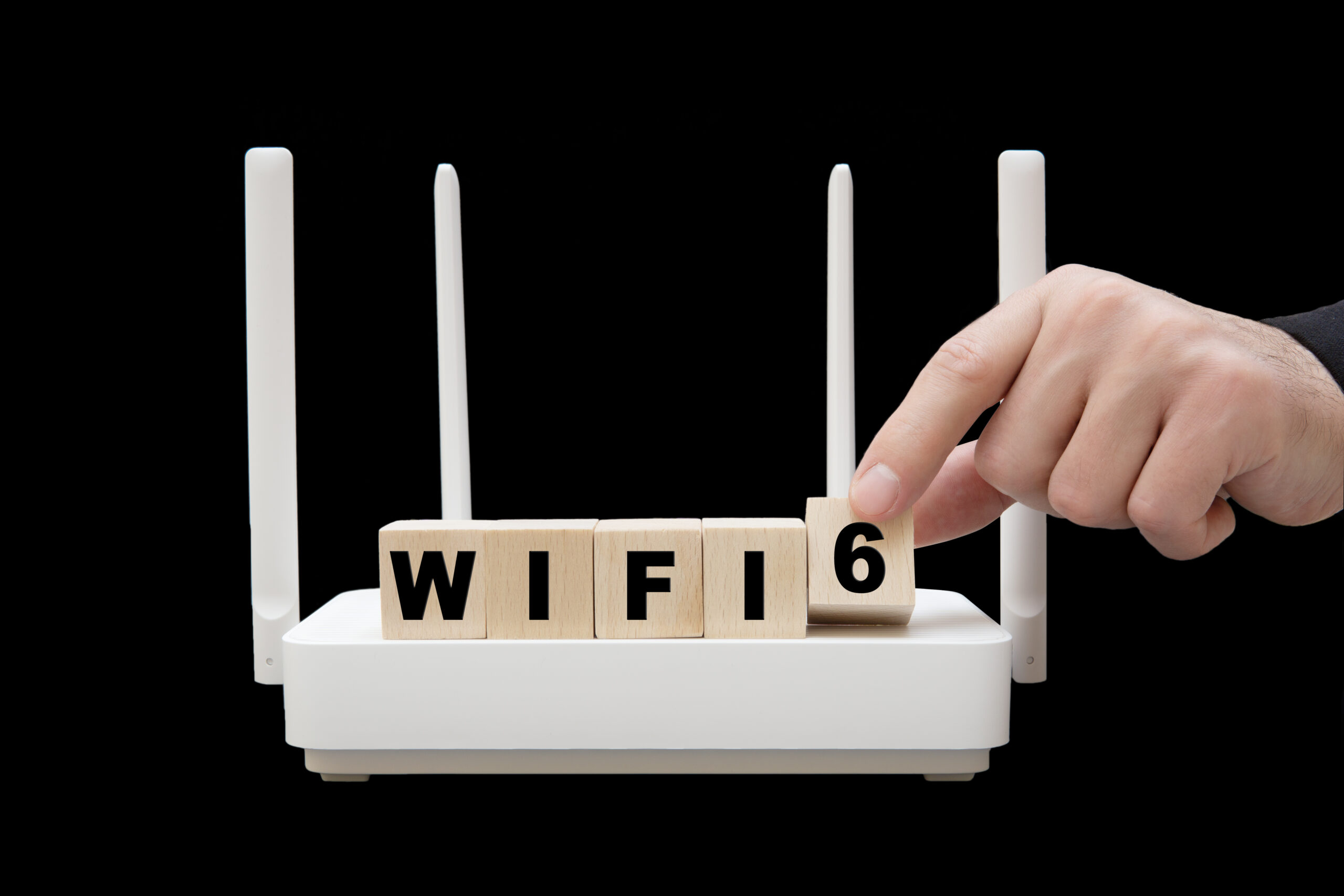“The recent changes to the IEEE’s IPR rules introduce more uncertainty about what is permitted to be used in assessing a RAND rate and remove some of the restrictions on licensors seeking injunctions.”
 In Part I of this two-part article, we provided an analysis of the Wi-Fi 6 litigation and technology landscape. This Part II discusses important changes to the IEEE rules governing the reasonable and non-discriminatory (RAND) licensing encumbrances on SEPs held by participants in IEEE standardization work. Unfortunately, these rule changes fall short of clarifying what RAND means for Wi-Fi licensors and implementers. Instead, fueled by Wi-Fi 6’s growing valuation and adoption of heavily patented core technologies from LTE and 5G, the rule changes arguably will only heat up the current litigation trend.
In Part I of this two-part article, we provided an analysis of the Wi-Fi 6 litigation and technology landscape. This Part II discusses important changes to the IEEE rules governing the reasonable and non-discriminatory (RAND) licensing encumbrances on SEPs held by participants in IEEE standardization work. Unfortunately, these rule changes fall short of clarifying what RAND means for Wi-Fi licensors and implementers. Instead, fueled by Wi-Fi 6’s growing valuation and adoption of heavily patented core technologies from LTE and 5G, the rule changes arguably will only heat up the current litigation trend.
IEEE IPR Rule Changes
The IP Rights (IPR) rule changes adopted in October 2022 by the IEEE Board of Governors entered into effect at the start of 2023, almost eight years after controversial changes to the previous IPR rules were adopted in February 2015. The new changes are patent holder friendly and introduce yet more uncertainty in the licensing of SEPs.
The 2015 IPR rule changes effectively restricted patent holders from seeking injunctions against an implementer unless patent validity and infringement had been adjudicated in favor of the patent holder on appeal. Also under the 2015 rule changes, patent holders were restricted from relying on comparable patent licenses as evidence of a reasonable royalty rate if such were obtained under the explicit or implicit threat of an injunction or exclusion order. Further, a royalty rate for a patent is reasonable only if it is apportioned to the value of the relevant functionality of the smallest saleable compliant implementation that practices the patent. This was generally held to mean a SSPPU.
The rule changes effective from the start of 2023 effectively remove the ban on seeking injunctive relief against unwilling licensees. No longer must a patent holder wait to seek an injunction or exclusion order against a recalcitrant infringer until its patent has been adjudicated to be valid and infringed on appeal. The rule changes also (i) allow patent holders to rely on comparable licenses as evidence of a reasonable royalty rate even if such were obtained under the threat of an injunction or exclusion order and (ii) remove the mandatory use of the SSPPU apportionment rule in rate setting.
The 2023 changes to the IPR rules were adopted for a number of reasons. As legal experts commented, the restriction on seeking injunctive relief contradicted the growing jurisprudence and the position of the U.S. Department of Justice (DOJ) that injunctive relief was available for SEPs subject to a F/RAND obligation provided that the four-factor test of the 2006 eBay case was met. The SSPPU apportionment requirement and the restriction against relying on comparable licenses obtained under the threat of an injunction were likewise lifted as being incongruous with developing jurisprudence on determining reasonable royalties.
Perhaps the more influential reason for the IPR rule changes were the growing number of negative letters of assurance (LOA) being issued by participants in IEEE standardization work to license their SEPs pursuant to the 2015 IPR rule changes. The DOJ indeed noted in a letter dated September 10, 2020, to the IEEE that “Since the [2015 IPR rule changes] went into effect, reports show that negative [LOAs] have increased significantly, comprising 77% of the total Wi-Fi [LOAs] at IEEE between January 2016 and June 2019. As a result, in 2019, the American National Standards Institute—a leading nongovernmental body that accredits US standards—declined to approve two proposed IEEE standards amending the 802.11 Wi-Fi standard.” Notable issuers of negative LOAs included Huawei, Nokia, Ericsson, Interdigital, and Orange. The IEEE tried to remedy the situation in 2018 by adopting a new, “custom” LOA form allowing patent holders to indicate their willingness to license their patents under the terms of the pre-2015 IEEE patent policy. This only applied, however, to projects that were started before the 2015 changes took effect in 2015. Important for the discussion here is that the Wi-Fi 6 project started before the 2015 IPR rule changes and thus these so-called “custom” LOAs do not apply to Wi-Fi 6.
At the time the 2015 IPR rule changes were adopted, it was predicted that a number of IEEE standardization participants would indeed refuse to license their SEPs under the new rules. There was also a lot of posturing in the build-up to the rule changes in 2015 suggesting that the new rules would stifle innovation and IEEE standardization work.
The graph below shows the effects of the 2015 IPR rule changes on Wi-Fi 6 development and innovation. The number of individual technical submissions overall actually grew 170% from Wi-Fi 5 to Wi-Fi 6 and the number of newly innovated (i.e., publications with a priority date after February 1, 2015) Wi-Fi 6 related publications slightly increased after the 2015 adoption of the IPR rule changes. Wi-Fi 6 related patent applications did decline slightly after the 2015 IR rule changes but remained constant through 2016 at the end of which the first draft of the Wi-Fi 6 specification was completed. As discussed in the second installment of this article, the difference between technical submissions and the decline in Wi-Fi 6 related innovation after 2016 is likely due to the adoption in Wi-Fi 6 of already-patented technologies from 3GPP such as OFDMA, MU-MIMO, and Beamforming.

Source: Unified Patents OPEN and OPAL.
Interestingly, the related graphs below show that participation in IEEE Wi-Fi standards development work by Wi-Fi component manufacturers such as Intel, Qualcomm, Mediatek, Broadcom, NXP, Newracom, and Quantenna increased dramatically after the 2015 IPR rule changes but participation in the same work by 3GPP infrastructure manufacturers like Ericsson, Nokia, and ZTE only slightly declined. Huawei is an exception to the latter trend of the 3GPP infrastructure manufacturers as its technical submissions to Wi-Fi increased in line with the submissions by its peer Wi-Fi component, client, and AP manufacturers. The decline in technical submissions from other sectors is noticeable after the 2015 rule changes. This group comprises education and research institutions and other non-practicing entities (NPE). One takeaway from these graphs is that technical submissions sourced from manufacturers of Wi-Fi equipment and components seem to have compensated for any decline in submissions by NPEs or cellular infrastructure manufacturers.

Source: Unified Patents OPEN

Source: Unified Patents OPEN
The Future of Wi-Fi Litigation
Wi-Fi 6 shares core technologies like OFDMA, MU-MIMO, and beamforming with the LTE and 5G standards, opening itself up for more assertions from 3GPP licensors. The recent changes to the IEEE’s IPR rules introduce more uncertainty about what is permitted to be used in assessing a RAND rate and remove some of the restrictions on licensors seeking injunctions. There is concern that the greater uncertainty and expanded injunction rights will spur the current rise in U.S. Wi-Fi litigation to new heights. The concern is becoming a reality, as firms like Huawei and institutions like CalTech plead their Wi-Fi cases in court.
Image Source: Deposit PHotos
Image ID: 531424506
Author: katie.chizhevskaya

![[IPWatchdog Logo]](https://ipwatchdog.com/wp-content/themes/IPWatchdog%20-%202023/assets/images/temp/logo-small@2x.png)


![[Advertisement]](https://ipwatchdog.com/wp-content/uploads/2024/04/UnitedLex-May-2-2024-sidebar-700x500-1.jpg)
![[Advertisement]](https://ipwatchdog.com/wp-content/uploads/2024/04/Artificial-Intelligence-2024-REPLAY-sidebar-700x500-corrected.jpg)
![[Advertisement]](https://ipwatchdog.com/wp-content/uploads/2024/04/Patent-Litigation-Masters-2024-sidebar-700x500-1.jpg)

![[Advertisement]](https://ipwatchdog.com/wp-content/uploads/2021/12/WEBINAR-336-x-280-px.png)
![[Advertisement]](https://ipwatchdog.com/wp-content/uploads/2021/12/2021-Patent-Practice-on-Demand-recorded-Feb-2021-336-x-280.jpg)
![[Advertisement]](https://ipwatchdog.com/wp-content/uploads/2021/12/Ad-4-The-Invent-Patent-System™.png)






Join the Discussion
No comments yet.